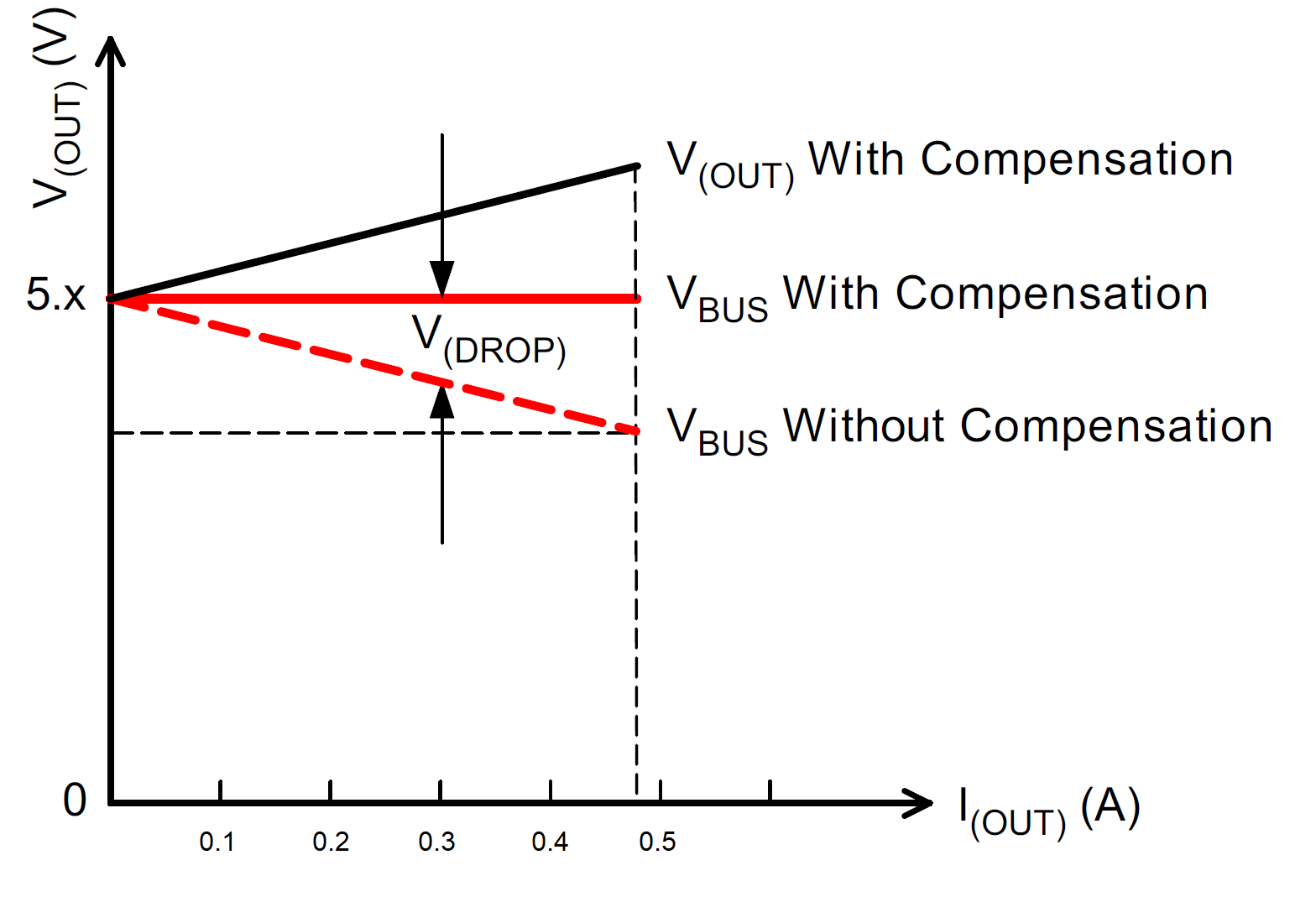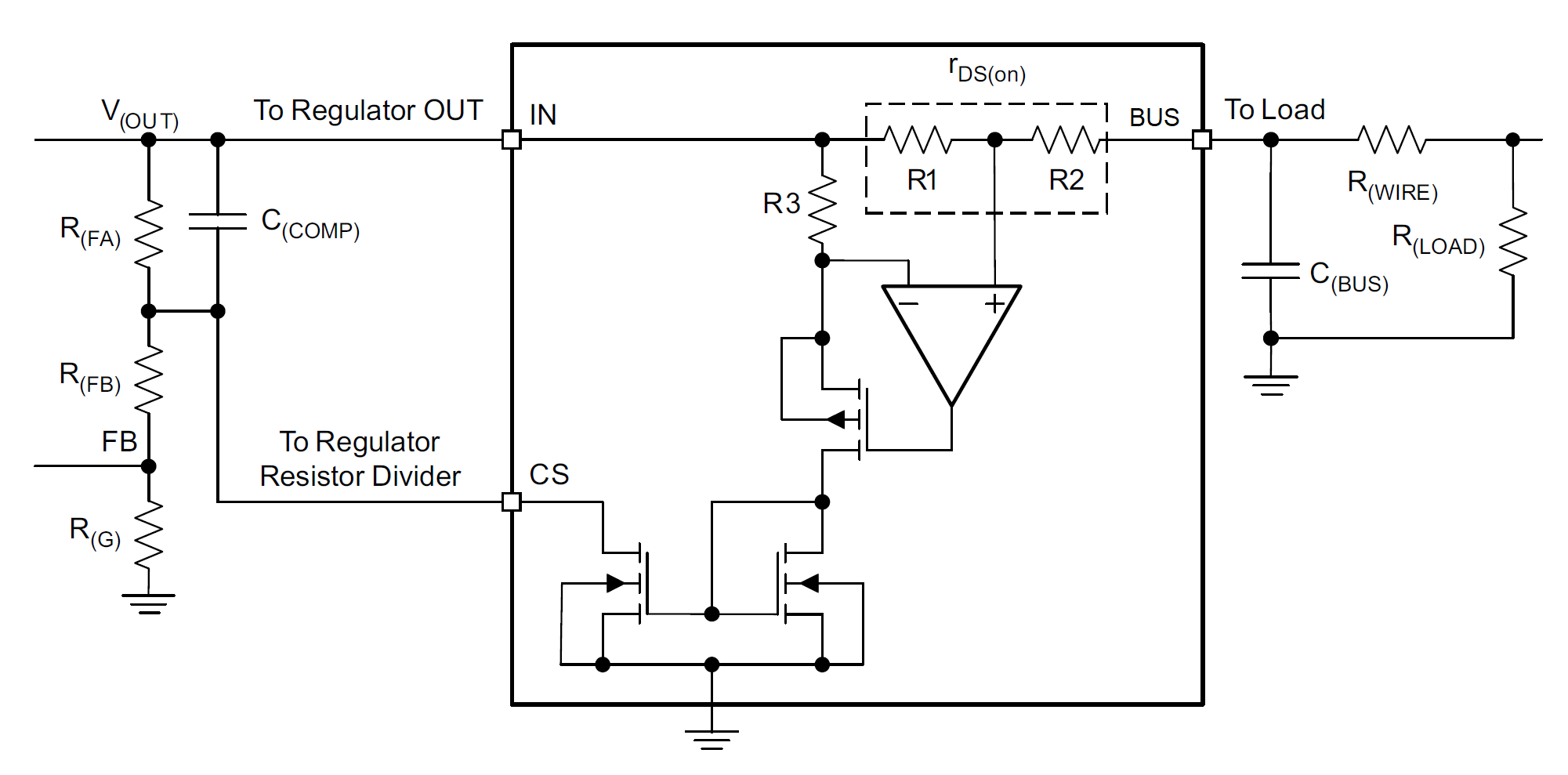ZHCSLC3B may 2020 – april 2023 TPD3S713-Q1 , TPD3S713A-Q1
PRODUCTION DATA
- 1
- 1 特性
- 2 应用
- 3 说明
- 4 Revision History
- 5 Pin Configuration and Functions
- 6 Specifications
- 7 Parameter Measurement Information
- 8 Detailed Description
- 9 Application and Implementation
- 10Device and Documentation Support
- 11Mechanical, Packaging, and Orderable Information
8.3.2 Cable Compensation
When a load draws current through a long or thin wire, there is an IR drop that reduces the voltage delivered to the load. In the vehicle from the voltage regulator 5-V output to the loading, the total resistance of power switch rDS(on) and cable resistance causes an IR drop at the loading input. So the charging current of most portable devices is less than their expected maximum charging current.
 Figure 8-1 Voltage Drop
Figure 8-1 Voltage DropThe TPD3S713-Q1 device detects the load current and applies a proportional sink current that can be used to adjust the output voltage of the upstream regulator to compensate for the IR drop in the charging path. The gain G(CS) of the sink current proportional to load current is 420 µA/A.
 Figure 8-2 Cable Compensation Equivalent Circuit
Figure 8-2 Cable Compensation Equivalent Circuit